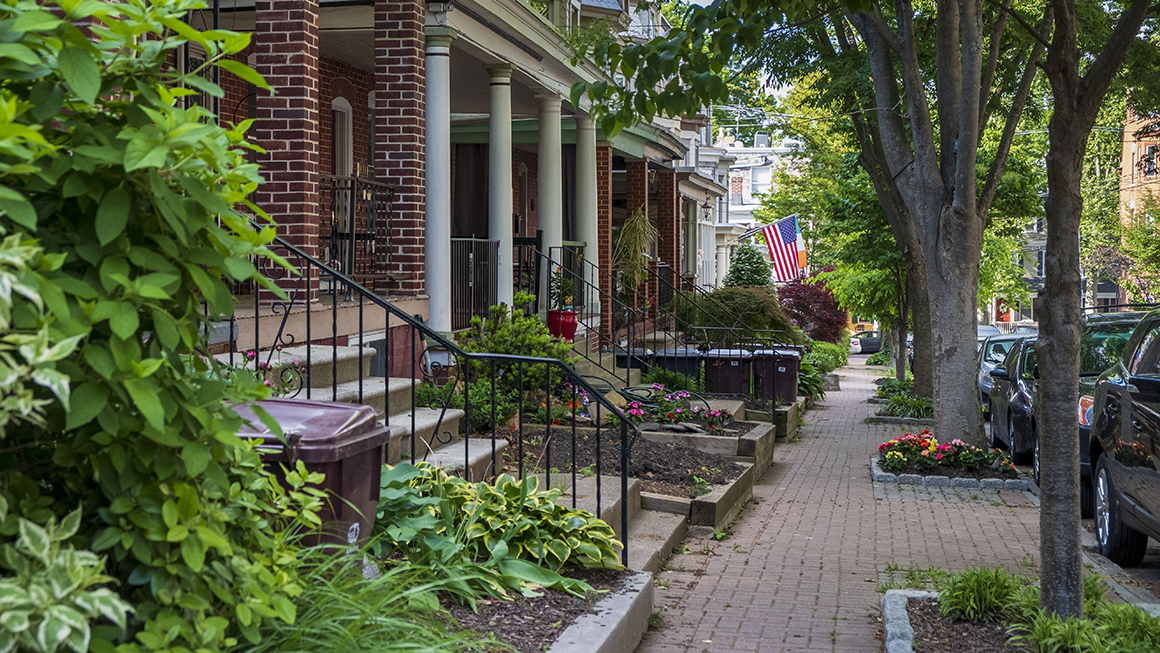
In last week’s State of the Union address, the Biden administration proposed three new actions to address the high costs of buying a home: mortgage relief credits for both first-time homebuyers and sellers of starter homes and a first-generation down payment assistance program. Although these efforts will require congressional approval, having the administration move housing policy to the forefront is a much-needed development.
Buying a house is less affordable than it has been at almost any time in the past three decades. These actions aim to increase the supply of homes and make homeownership more affordable for first-time homebuyers, particularly first-generation homebuyers without family wealth. Today, younger people—who represent a disproportionate share of first-time homebuyers—have lower homeownership rates than previous generations at the same age. The racial homeownership gap also remains wide. The administration’s proposed actions could narrow that gap, as Black and Hispanic families would disproportionately benefit from the first-generation down payment assistance relative to white families, who are more likely to be able to rely on family wealth.
As Congress considers approving the administration’s proposals, it’s worth understanding the state of housing in the United States and the trends that may be motivating these actions.
Housing supply considerably lags demand
The US has an acute lack of homes. Listings have fallen 44.7 percent since 2019, with the supply of homes under $200,000 falling 74.5 percent. Many people are staying in homes larger than what they need, as they have a very favorable mortgage interest rate.
In January 2024, 47.9 percent of homeowners with a mortgage backed by Fannie Mae or Freddie Mac had an interest rate of 3.5 percent or lower. Meanwhile, the average interest rate available for a new 30-year fixed-rate mortgage was 6.6 percent. This wide gap has frozen mortgage activity.
We learned from the 2022 American Community Survey that 94.5 million homes, or 63 percent of occupied houses, have three or more bedrooms, which is optimal for families with children. But 56 percent of owner-occupied homes with three or more bedrooms have only one or two occupants, the majority of whom are 62 and older.
As a result, older homeowners are retaining their high-occupancy homes, making the market unaffordable for families to buy new, larger homes, which in turn keeps those families’ affordable starter homes off the market. When affordable homes do reach the market, they are often sold to large-scale institutional investors who can pay cash, locking out new borrowers without existing wealth to draw from.
If historical trends persist, Freddie Mac estimates that over the next five years, more households will need homes than there are baby boomers relinquishing those homes. The seller’s credit attempts to provide incentives for “locked-in borrowers” to sell homes that no longer fit their needs while ensuring these homes are sold to an owner-occupant.
National mortgage affordability is historically low
Affordability issues have rarely been more pressing than they are now. As of January 2024, the share of median income needed for the monthly mortgage payment with a 20 percent down payment stood at 31.6 percent, higher than the 30.9 percent at the peak of the housing bubble in November 2005. For mortgages with 3.5 percent down, the housing cost burden is 36.7 percent, also above the prior peak of 35.8 percent in November 2005.
Although these cost burdens are down slightly from October 2023, when interest rates were higher, housing affordability is very low in a historical context. The White House’s first-time homebuyer tax credit will provide incentives for more borrowers to buy and will reduce the financial burden on borrowers who are stretching to buy their first home.
Households with low wealth have less access to homeownership
Homeownership has historically offered the best avenue to build intergenerational wealth. Potential homebuyers whose parents were also homeowners are more likely to access some of that wealth for a down payment or other help in purchasing a home. For generations, lack of access to housing-based family wealth has suppressed homeownership for households of color and contributed to the racial homeownership gap.
The federal first-generation down payment assistance proposal, which was first introduced by the Biden administration in 2021, seeks to support borrowers without intergenerational wealth. Based on our analysis, the most recent iteration of the proposal from 2023 most effectively targets assistance while minimizing administrative burdens and could help up to 4.7 million low-wealth households become homeowners.
Addressing these three major housing issues
The administration’s housing proposals are meant to address the three major issues confronting first-time homebuyers: lack of supply, affordability, and access to mortgage credit. The administration believes these actions would raise the homeownership rate among first-time homebuyers and households of color, allowing these homebuyers to build wealth and close the racial homeownership gap. As Congress considers whether to enact these proposals or other parts of the administration’s housing policy, policymakers can use these data to better understand the current housing situation in the US and how it has left many potential first-time homebuyers behind.
Let’s build a future where everyone, everywhere has the opportunity and power to thrive
Urban is more determined than ever to partner with changemakers to unlock opportunities that give people across the country a fair shot at reaching their fullest potential. Invest in Urban to power this type of work.